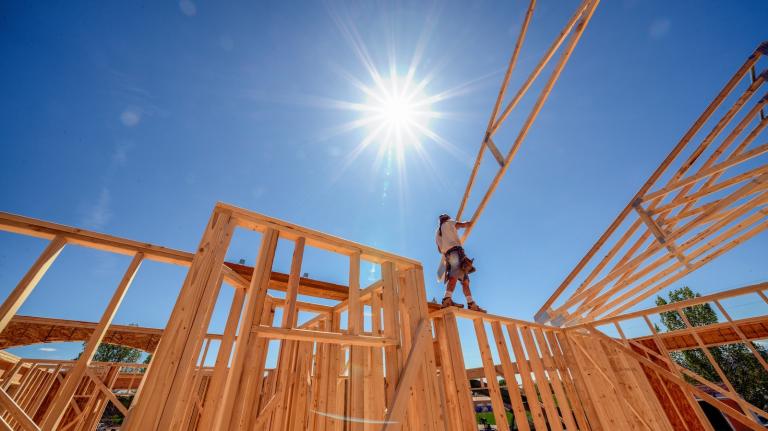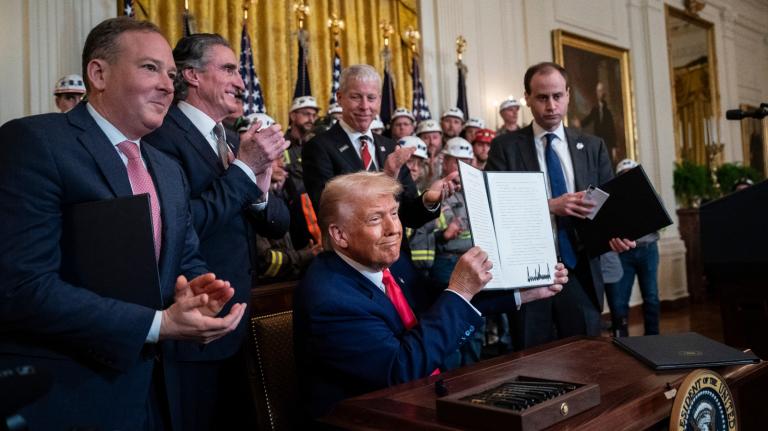You may not have noticed it, but a butterfly or bee certainly has. It’s a strip of dirt and grass between a sidewalk and a street, or an empty lot, or greenery running along a railway. Compared to an official city park, these “informal green spaces” don’t get much love from humans, even though they serve as invaluable sanctuaries for pollinators and other urban species.
“They’re the sort of forgotten, unconsidered places, unplanned spaces,” said Hugh Stanford, an urban sustainability researcher at RMIT University in Australia. “You feel like you’re in a sort of a secret wilderness. They, for all intents and purposes, provide an environmental benefit, but are completely overlooked by formal planning bodies.”
Just like an impromptu hangout can be as fun as a formal gala, even an unplanned green space can provide the benefits you’d get from an official park: They support biodiversity, their dirt can soak up rainwater to prevent flooding, and they release water vapor to cool the surrounding area. Stanford’s new research finds that they’re also getting a surprising amount of engagement from human passersby, suggesting that informal green spaces can improve mental health by reuniting urban populations — which are exploding worldwide — with nature. And fostering them could be particularly impactful in underserved neighborhoods devoid of formal green spaces.
Stanford and his colleagues zoomed in on Greater Melbourne, Australia, using land-use data to identify green spaces. They sorted the formal plots, like proper parks and residential gardens, from the rest of the informal green spaces. The team then married that mapping with anonymized data from citizen science apps like iNaturalist, which showed where in Melbourne people had stopped to interact with nature — to identify a plant or insect. “People are using informal green spaces about as much as they’re using formal green spaces — we really couldn’t distinguish between the two of them,” said Stanford, lead author of a new paper describing the findings. “But this is not an excuse for planners to come along and say, ‘Oh, well, people are using railways, and let’s just get rid of all the parks.’”
The team found particularly high engagement with greenery around railways and utility infrastructure. That might be because those areas have been left to grow over longer time periods. Compared to a lawn in a city park that’s constantly shredded by a lawnmower, in an informal space species come and go with the seasons: Flowers bloom, attract pollinators, and feed herbivores.
“It means that you can get some interesting ecological emergence and spontaneous growth of vegetation,” Stanford said. “You get quite important biodiversity on these sites, including endangered species. What might be considered weeds to some people might be considered an urban oasis to others — certainly to birds.” Native pollinators, too, love a good mess of greenery, both for food and for protection: In a big open field, there’s nowhere for them to hide from predators.
Beyond Melbourne, other researchers have also begun quantifying these unmanaged green spaces. In 2019, scientists scoured satellite imagery of two neighborhoods in Philadelphia — South Kensington and Olde Kensington — then walked every block to confirm patches of greenery. They found 351 green spaces, totaling 1 million square feet of area, more than two-thirds of which were informal. (Think about all the unused land stretching underneath high-voltage power lines.)
“These are things that the city might not necessarily be aware of,” said Illinois State University urban geographer Alec Foster, who did the research. “So thinking about how these green spaces perhaps provide opportunities for people to utilize them who might not have access to a park otherwise.”
Nurturing these spaces sometimes means just letting them grow wild, undisturbed. In other cases a city might turn vacant lots into community gardens, providing both food for people and habitats for animals. Community members can also tend smaller roadside plots, using cues like small fences or signs to telegraph to pedestrians that the area is under active management.
In underserved neighborhoods, where city governments haven’t invested in parks, informal green spaces can provide desperately needed refuges for people to engage with nature. But, Foster cautions, cities shouldn’t do this sort of rehabilitation without input from the community about what residents actually want for their neighborhood — a garden versus a more recreational park on a vacant lot, for instance.
And just as city employees are paid to maintain formal parks, so too might a government employ locals to maintain informal green spaces. “Retired people who could use a part-time job, with a little investment in seeds and tools, they could really tend and love a space,” said Elizabeth Sawin, director of Multisolving Institute, which advocates for solutions that solve several problems at once. “Or you have young people where that’s a career path to learn about horticulture and maintenance and planting of trees.”
As more and more people flock to cities around the world, informal green spaces will be ever more critical for preserving that connection to nature. “Everyone’s got this really intricate relationship with versions of this phenomenon in their life,” Stanford said. “The fact that people are using informal green spaces, at least to me, indicates there’s something special about them that’s not provided by other formal green spaces.”





